Bogturtle's Garden- April 14-end
So much already, so I started a new section.
Below are the two additions of plants that I did have, but, strangely, were lost.
One is the Scottish Heather, but in the white-flowered clone, as I steer away from the normal color very often.
And the other the Yellow Fumetory, or Corydalis lutea, just repurchased, after weedy as it it, I somehow lost it. The new plant is small and not blooming yet.
This photo of C. lutea is from a few years ago, when it seemed to be thriving in the rock garden. The new one is there now, but buds have not formed.
Asarum europaeum ,I think. And the neatest little ground cover. Maybe some botanist now calls this as part of the Genus Hexastylis, not Asarum.

Epimedium wareleyense, I think. And I am looking forward to this plant increasing.
A low growing Epimedium called E. nivea, I think. The snow white flowers are not a common color in the Genus, while there are others.
Finally getting the tiny Phlox sublata 'Alba' going. Long ago, while I needed to save money, raising a family, I passed up the huge amount of this plant, at $2 for a two foot circle on a bushel basket lid. Every local farm market featured them. I paid a lot more for the one I got about 3 years ago.
It is growing at one end of the lens shaped bed, just outside the bank of windows on the addition. The main plants, there, are 6 bushes of Red Knockout Rose, that are coming on especially well this year.
I planted seed of the normally purplish pink Dames Rocket, Hesperis matronalis, and the rare, white-flowered sort. Too weedy, entirely, when I wanted other plants in the main perennial area. But this plant has bloomed over by the tool shed or barn for the second year in a row. I will have to google for the leaf shape, or try to find old photos of the two sorts that I disliked and pulled out.
Dames Rocket is another, old fashioned 'Cottage Garden' plant. And, for maybe the third time, Cottage Garden choices go back to the time when gardeners, hired by the wealthy in Britain, would take cuttings or seeds from the gardens of their wealthy employers back home to their humble cottages.
So the rapidly growing, overwhelming vine Akebia was suggested. Stand back. You will succeed in growing Akebia. Five lobes in the leaves, so it is Akebia quinata, and I chose the white flowered sort, rather than the one with dull purplish flowers. Supposedly scented like chocolate.
It has run off in all directions, in a rather sneaky and surprising manner.
Still, too nice to eradicate, if that is possible.
Every day, as I walk to my truck, I have appreciated how well the Hen and Chicks are doing. Better than ever and better than I expected. Of course, if any rosettes starts to go to seed, I pull the elongated individual out and discard it. Not interested in seed. Years ago I purchased a collection of varying sorts and have been moving them around since.
Taken through the door.
Easy to see how out of place the Daffodils are, as they hide all the appropriate rock garden plants. I expect I will dig them up, as they show dying down for the Summer.
A speedwell not speeding. A small sample of this ground-hugging Veronica. Maybe the sort called 'Georgian Blue'. Really a true blue color, but needing protection, as so many plants would simply shade it out or otherwise out compete it. Over in the main perennial bed.
This is another plant that I once had, and I planted a new one. Such a good price at a 'big box' store, when I was picking up stuff to renew the lawn. Geum 'Lady Strathedon', and very much like Geum borisii, or Geum 'King Boris'. That is not budded yet. It is evergreen and among the first of all rock garden gems planted here. I assume the newly planted is evergreen also.
Among the shrubs or trees that are in front of the screen that hides the potting bench, etc. from view from the house.
The underused shrub Fothergilla and the sort 'Mt Airey'. As useful for the brief blooming of the 'bottle brush' fragrant flowers as for the brilliant scarlet it will take on in Fall, if in the Sun. In the circle made by the drive. Being able to have that circle is a great convenience if company visits. It would be interesting to see how many modern folk could even picture a bottle brush.
Right at where we exit where we park, and very tall. Probably Viburnum carlesii. This smells like baby powder to me. The waxy flowers and pink buds makes me think it is a tall form of V. carlesii. I did have V. c. compactum for many years. Then it suddenly died. Cannot say why.
But this year, the leaves in this little clump are still expanding and look especially good.

Another example of my jumping the gun, this ground hugging Veronica is looking better and better, and in an area with little competition, since I severely weeded. 'Georgia Blue' as I said before.
A bush of the double flowered Kerria grows just into the woods, at the rear of the house. K. japonica 'Plena'. Definitely think it will become a spreading colony.
I have no idea what these young Raccoons are finding to eat. Perhaps insects. I want to introduce fish from the wild and tadpoles or a frog, but have to net the fish or tadpoles, and, maybe, a frog might come. They travel in on a rainy night. Presumedly from where they have some population pressure. And, unfortunately, they may leave in the same manner.
The other, surprisingly, did not get through the Winter here. That is called Parrot Feather, and generally is submersed but growing out of the water. I think it did survive other Winters.
Unlikely I will save any seed, but may dig up and move one little plant to just by the pool edge, where water is dependable. Maybe a permanent feature in the area, which is fine. And a white flowered Forget-Me-Not is blooming in the pot with another Japanese Maple, and I am sure I never planted that. Didn't even know any would bloom white.
Can't brag about the quality of photos, here, but a light bloom is on Kerria japonica 'White Flowered'. The shrub is slowly spreading along the exit drive from where we park the vehicles. Called 'white', it is, actually, a beautiful palest yellow.
Back there, also, in the shrub border to the lawn, another of the Fothergilla is growing. F. 'Blue Shadow' will have bluish green leaves that color quite nicely each Fall.
And here is the white Forget-Me-Not, and while I am forgetful, I am sure I never ordered the plant or seeds. It is growing with exposed crocus bulbs, in the pot that has the red-barked Japanese Maple called 'Fjelheim', up against the huge Kerria, with its double yellow flowers.
Blogger does not allow delete, cut or getting rid of images mistakenly posted.
The big red Dogwood has gotten so tall it cannot easily be seen in bloom from the bedroom window. This view is the only way to show it. The native white one has few blooms this year, but another wild one is well in bloom further into the woods behind that one. The 'Celebration' Azaleas have lots of honeysuckle invading. Another job for me. And I think, once again, the colors give away that I have made other purchases as 'Celebration' that were mislabeled at the nursery.
The Spanish Squill is like the famous Blue Bell of British woods, but I think that is Scilla nonscripta.
Scilla hispanica is now in many places on the property, but all are the wild color.
Few houseplants here. And, generally, those that endure neglect. The miniature pale yellow orchid seems to bloom for weeks. And the generally neglected African Violet is having a few flowers. The Easter Cactus is past, but was appreciated.
Because I like to take before and after photos of any project, I had re-roofed the little pump house in back of the pool. And I then stained the roof sections with the same silvery stain I use on my house siding and the recently renovated bench by the little, artificial pond or pool. I will save that photo as the 'after' in my collection.
A number of unlabeled, or out of order, photos of Rhododendron 'My Jane'. It blooms beautifully across the back yard from the house. Rather a straw yellow. Since I have had trees cleared to bring more Sun to the roof, planning solar panels, the Rhododendron may become denser. Another benefit is my vegetable garden will be sunnier. And I included the photo just above, as the Sun made it look so good, and almost every bud was open.







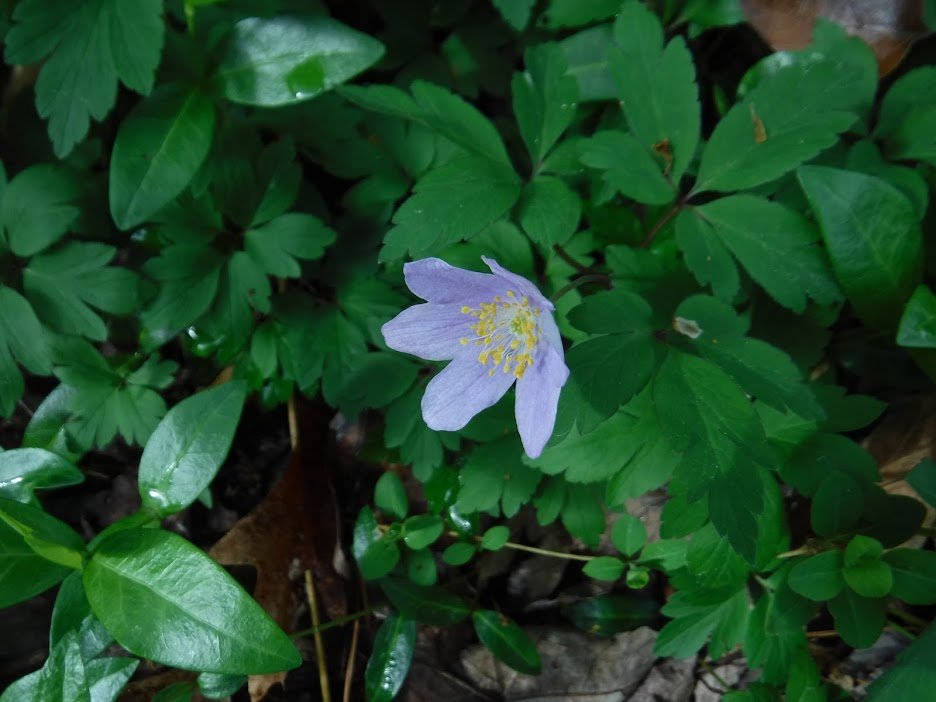





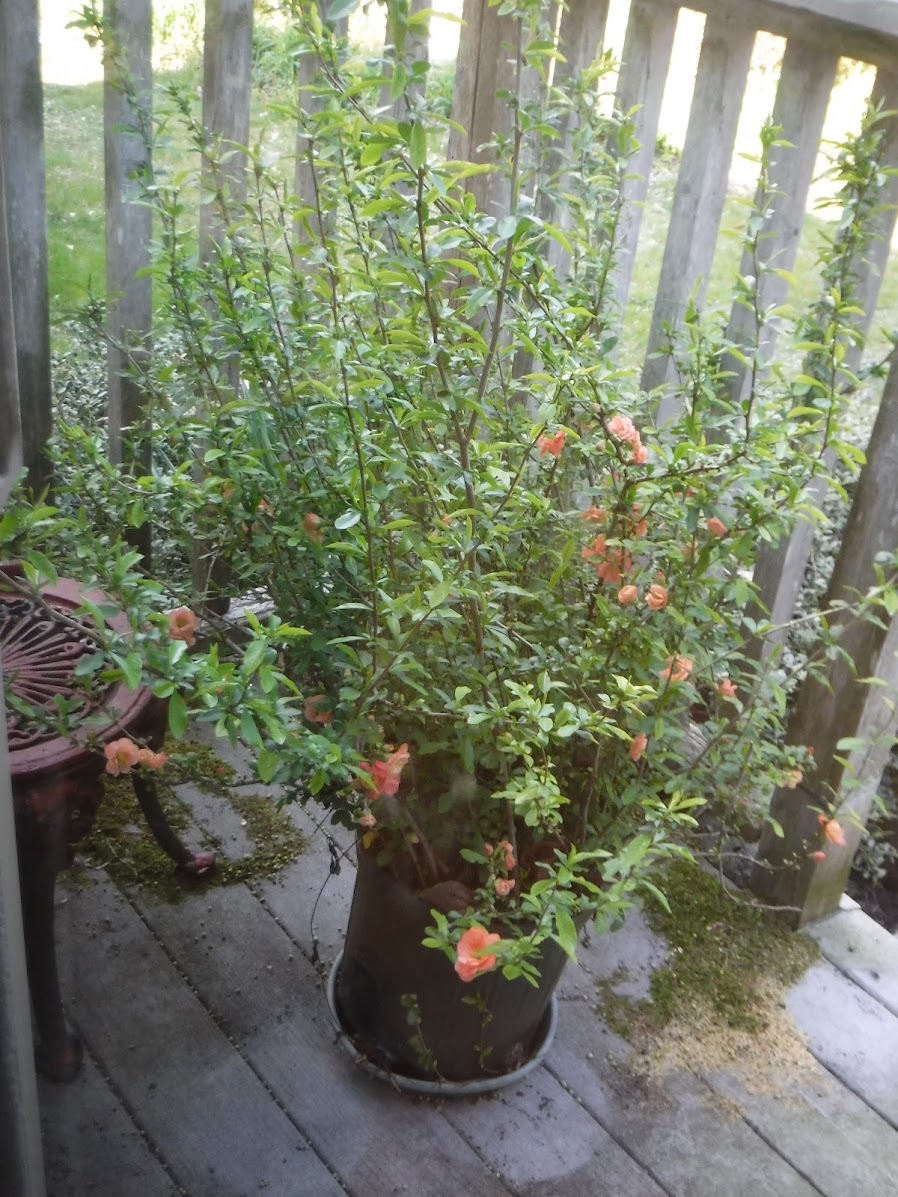








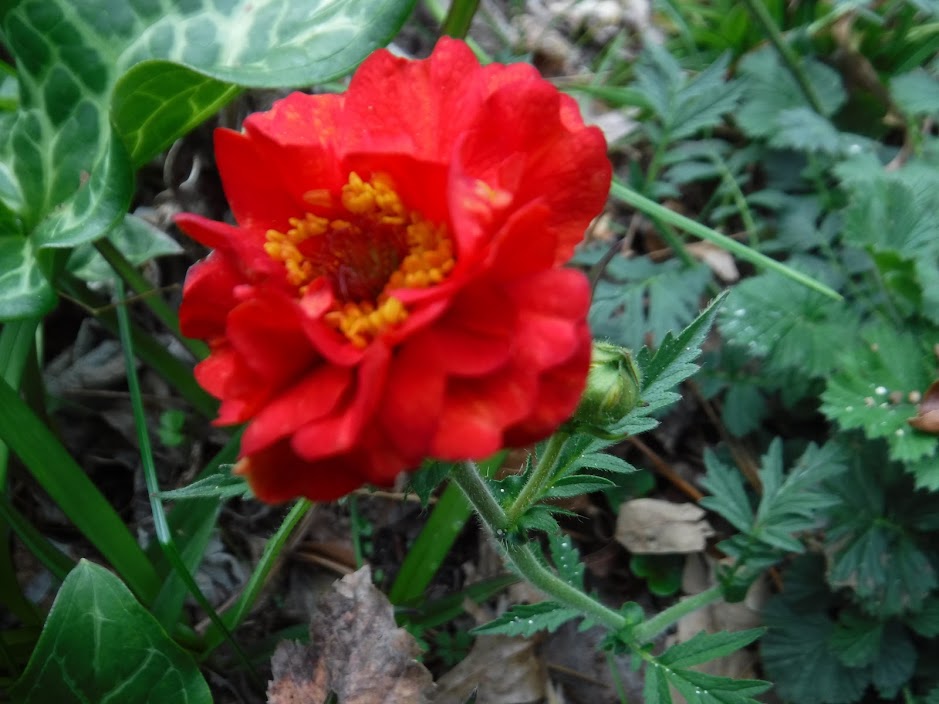







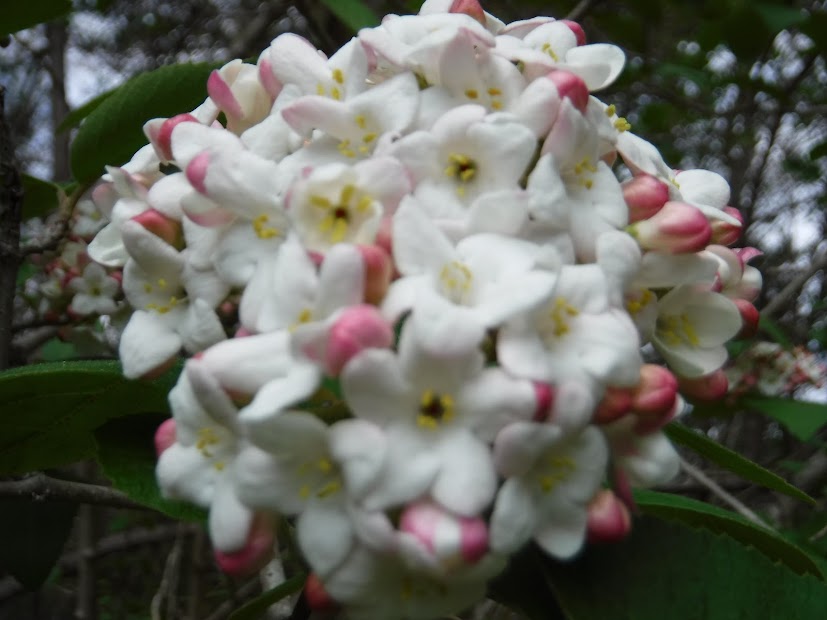










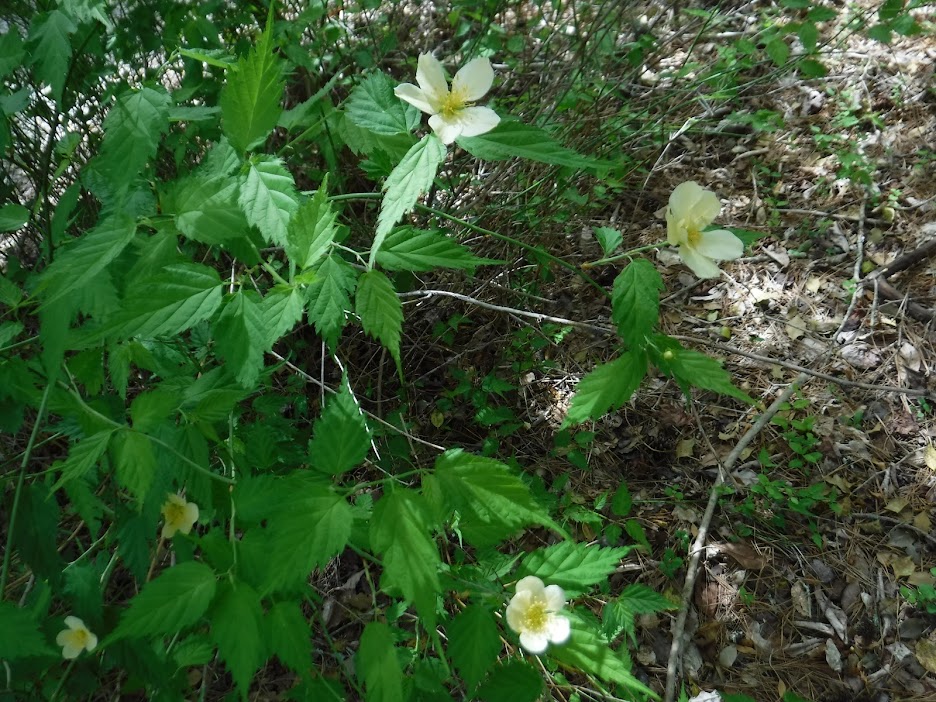
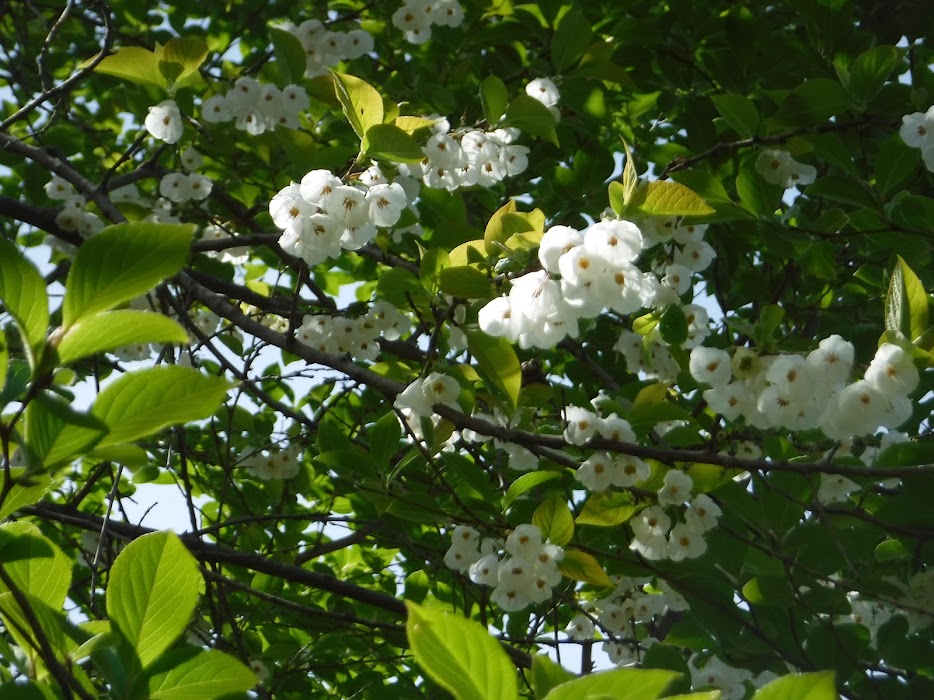


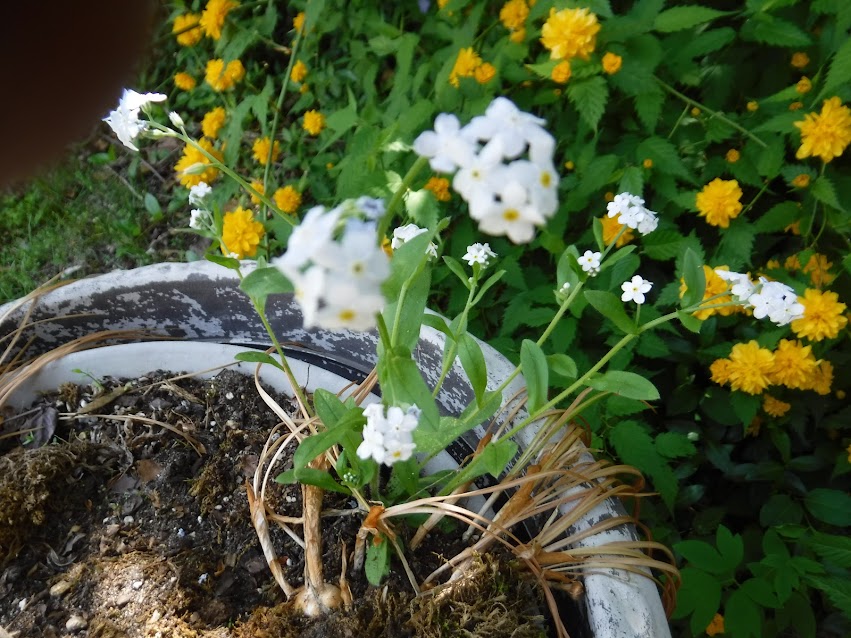












Your unknown plant may be Garlic mustard (Alliaria petiolata). You grow so much that I can't. It is just too hot, humid, and dry in the summer & clay soil to China.
ReplyDeleteRight you are and thank you!
DeleteWe have acid sand, which dries out quickly. One reason a lot of choices don't establish themselves for the long haul, unless individually watched. Impossible, of course. Almost more a collection than gardens.
ReplyDeleteEverything is so pretty.
ReplyDelete